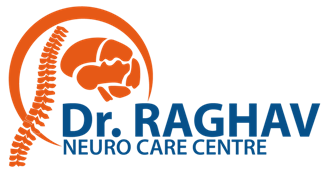- Home
- »
- Movement Disorder
- »
- Parkison’s Disease
Parkison’s Disease
Parkison's Disease
Tics
Chorea
Dystonia
Huntington's Disease
Myoclonus
Parkison's Disease
Botox Injections
Deep Brain Stimulation Surgery
Parkinson’s disease is a progressive neurological disorder that affects movement. It is caused by the degeneration of dopamine-producing cells in the brain, particularly in a region called the substantia nigra. Dopamine is crucial for coordinating movement, and its deficiency leads to motor symptoms such as tremors, stiffness, and slowed movement.
Causes of Parkinson’s Disease
The exact cause of Parkinson’s is unknown, but both genetic and environmental factors are believed to play a role.
Genetic Factors
Some individuals inherit specific gene mutations that increase the risk of Parkinson’s. However, most cases are sporadic with no familial link.
Environmental Factors
Exposure to toxins like pesticides and heavy metals may increase the risk of developing Parkinson’s, though the connection isn’t fully understood.
Symptoms of Parkinson’s Disease
Parkinson’s symptoms fall into two categories: motor and non-motor symptoms.
Motor Symptoms
- Tremors: Uncontrollable shaking, often starting in the hands.
- Bradykinesia: Slowed movement, making routine tasks difficult.
- Rigidity: Stiffness in muscles, leading to discomfort.
- Postural Instability: Poor balance, increasing the risk of falls.
Non-Motor Symptoms
- Depression and Anxiety: Mental health changes are common.
- Sleep Disturbances: Difficulty sleeping or staying asleep.
- Cognitive Decline: Problems with memory and decision-making.
- Autonomic Dysfunction: Issues with bodily functions, such as digestion.
Diagnosis of Parkinson’s Disease
Parkinson’s disease is diagnosed based on medical history, symptoms, and physical examination. There is no specific test, but doctors may use MRI or CT scans to rule out other conditions.
Treatment Options for Parkinson’s Disease
While there is no cure, treatment focuses on managing symptoms.
Medications
- Levodopa: The primary drug used to boost dopamine levels.
- Dopamine Agonists: Mimic dopamine effects.
- MAO-B Inhibitors and COMT Inhibitors: Prevent the breakdown of dopamine, extending its effects.
Surgical Treatment
For severe cases, Deep Brain Stimulation (DBS) is an option. This involves implanting electrodes in the brain to regulate abnormal activity, reducing symptoms.
Supportive Therapies for Parkinson’s
- Physical Therapy: Improves mobility and flexibility.
- Occupational Therapy: Helps with daily tasks.
- Speech Therapy: Addresses speech and communication difficulties.
- Exercise: Regular physical activity helps maintain movement and balance.
Living with Parkinson’s Disease
Managing Parkinson’s involves lifestyle adjustments like a healthy diet, regular exercise, stress management, and emotional support. Counseling and support groups are valuable for both patients and families.
Conclusion
Parkinson’s disease is a complex condition that affects movement and other areas of life. Although there is no cure, treatments like medication, surgery, and supportive therapies can help manage symptoms and improve quality of life. Early diagnosis and proactive care are key to better long-term outcomes.
- raghav.sem@gmail.com
- 7310644100
- Vipin Nursing Home, Krishna Nagar, Mathura
Quick Link
Departments
- Cervical
- Epilepsy
- Migraine
- Dementia
- Headache
- Parkinson's
- Muscle Disease
- Brain Stroke Messages
- Spine Related Disorders
- Neuropathy Amongst Other Disorder
